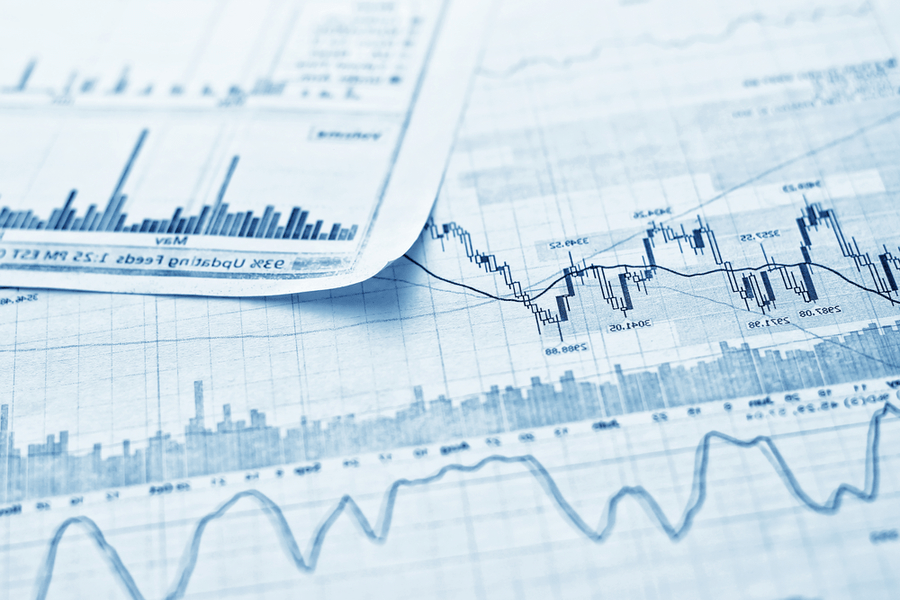
Quarterly figures and investing: what can you do with them?
Quarterly figures show investors how listed companies are doing. It provides insight into how they have performed over the past three months. It is earnings season four times a year: an important moment! Why is that? In this blog you can read how to read quarterly figures like a pro, the influence on the stock market and you will see an overview of the quarterly figures of large Dutch and foreign companies.
What are quarterly earnings and what is the earnings season?
Quarterly figures provide insight into how a company has performed in the previous 3 months. As the name suggests, figures are presented every quarter. This can sometimes differ. Listed companies are required to share these figures. The following figures are shared:
- Balance
- Profit and loss account
- Cash flow statement
The period in which quarterly figures are shared is also called the reporting season.
Overview of publication dates for quarterly figures for AEX companies
Below you will find an overview of the publication date of quarterly figures of a number of large listed Dutch companies for the first quarter of 2022. The overview shows the publication dates of the 25 companies listed in the AEX on April 17, 2022. Numbers 23, 24 & 25 have a half-year update, read more in the blog why.
| # | Datum | Company |
|---|
| 1 | Wednesday, April 20, 2022 | ASML Quarterly Figures Q1 2022 |
| 2 | Wednesday, April 20, 2022 | ASMI Quarterly Results Q1 2022 |
| 3 | Wednesday, April 20, 2022 | Just Eat Takeaway Trading update Q1 2022 |
| 4 | Wednesday, April 20, 2022 | Heineken Trading update Q1 2022 |
| 5 | Thursday, April 21, 2022 | AkzoNobel Quarterly Results Q1 2022 |
| 6 | Thursday, April 21, 2022 | RELX Trading update Q1 2022 |
| 7 | Monday, April 25, 2022 | Philips Quarterly Figures Q1 2022 |
| 8 | Tuesday, April 26, 2022 | Randstad Quarterly Figures Q1 2022 |
| 9 | Wednesday, April 27, 2022 | Unibail-Rodamco-WFD Trading update Q1 2022 |
| 10 | Thursday, April 28, 2022 | Unilever Trading Statement Q1 2022 |
| 11 | Friday April 29, 2022 | KPN Quarterly Figures Q1 2022 |
| 12 | Friday April 29, 2022 | IMCD Trading update Q1 2022 |
| 13 | Friday April 29, 2022 | Signify Quarterly Figures Q1 2022 |
| 14 | Friday April 29, 2022 | BESI Semiconductor Quarterly Results Q1 2022 |
| 15 | Tuesday, May 3, 2022 | DSM Trading update Q1 2022 |
| 16 | Tuesday, May 3, 2022 | Universal Music Group Q1 2022 |
| 17 | Wednesday, May 4, 2022 | Wolters Kluwer Trading update Q1 2022 |
| 18 | Thursday, May 5, 2022 | ArcelorMittal Quarterly Figures Q1 2022 |
| 19 | Thursday, May 5, 2022 | Shell Quarterly Figures Q1 2022 |
| 20 | Friday, May 6, 2022 | ING Group Quarterly Figures Q1 2022 |
| 21 | Wednesday, May 11, 2022 | Ahold Delhaize Quarterly Figures Q1 2022 |
| 22 | Thursday, May 12, 2022 | AEGON Quarterly Figures Q1 2022 |
| 23* | Monday June 27, 2022 | Prosus half-year figures 2022 |
| 24* | Thursday, August 11, 2022 | Nationale Nederlanden half-year figures 2022 |
| 25* | Thursday, August 18, 2022 | Adyen Netherlands half-year figures 2022 |
When will quarterly figures be announced?
It often seems like the earnings season is the entire year. When the last companies are busy publishing and discussing the previous quarter, the next ones are already in the starting blocks for the next quarter. The publication of quarterly figures almost always falls at fixed times, unless a company has a split financial year. In practice, companies publish the figures within 7 weeks after the end of each quarter. Roughly speaking, you get the following 4 earnings seasons:
- First quarter of the year: April to mid-May publications
- Second quarter of the year: July to mid-August
- Third quarter of the year: October to mid-November
- Fourth quarter of the year: January to mid-February
Where can you find quarterly figures?
If figures are published, you can find these figures on the company’s own website under investor relations pages. In addition, all major financial news sites, such as Bloomberg, also publish the figures.
You can also find information on websites of an index, such as the Nasdaq.
Why are quarterly figures important?
Why is it important to keep an eye on quarterly figures? As an investor, it is important to keep an eye on the figures because this brings a lot of volatility on the stock market. Volatility brings opportunities on the stock market, due to the large price fluctuations. Price differences of 20% are not unusual during the figures season.
This is mainly about expectations. Many private investors compare analysts’ expectations with the published figures. Do the results meet expectations or not? Are the current expectations realistic? If results are disappointing, this has a downward effect on the price; if expectations are exceeded, it often rises.
Figures, whether good or bad, cause fluctuations on the stock market and cause emotions among investors.
Even if you don’t own the stock in question, your stock portfolio can still be affected. This is called the ripple effect. The ripple effect is when the performance of a company in the same sector can have an effect on the broader market.
Expectations may be priced in
Good figures from a company do not always mean a rise in the price. It is more common for a company to come out with good figures, but then still fall in price. How does this work? This is because the expectations were already priced into the price. Investors anticipate the market and make decisions based on expectations for the future.

How do you read quarterly figures?
But how should you read and understand the results and figures of a company when they are announced? This can be tough. A report is often full of jargon, without knowledge such a report is tough and boring to read. To ensure that you can scan the reporting of quarterly figures like a pro, four important terms are explained below:
Turnover
Turnover, often referred to as revenue of sales in American companies, indicates how much money has come into a company.
Net profit
Net profit is what remains after all costs are deducted from turnover. Profitability indicates whether a company is operating efficiently. Also consider the type of company, because for example, young technology companies often do not yet make a profit, although in that situation this does not necessarily mean that they are not operating efficiently.
Earnings per share
Earnings per share (EPS) is the amount that results when net profit is divided by the number of outstanding shares. Earnings per share also gives an indication of how much dividend can be paid out.
Listed in EU: Mandatory twice a year
Listed companies in Europe no longer have to share quarterly figures since 2016. As a result, not every reporting season is the same with regard to shared information. It is still mandatory to publish figures twice a year. When companies only publish figures twice, it usually concerns two half-year figures. 1 update in the summer period and 1 update at the end of the year (after the fourth quarter). Some companies choose to publish 4 times, but publish a less extensive update on 2 occasions: the trading update.
Listed in America: Mandatory four times a year
In America, it is still mandatory to share key figures every quarter. Many Dutch companies still choose to share results four times a year. For example, the ratio on the AEX is about 50-50.
Our reading tips
for the novice investor
